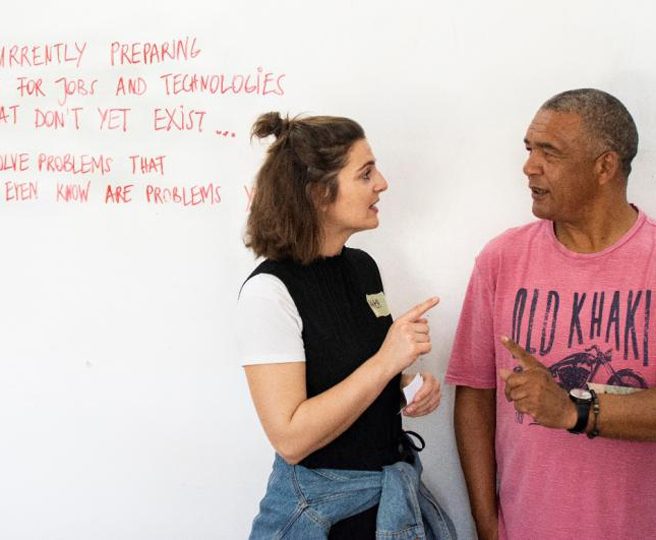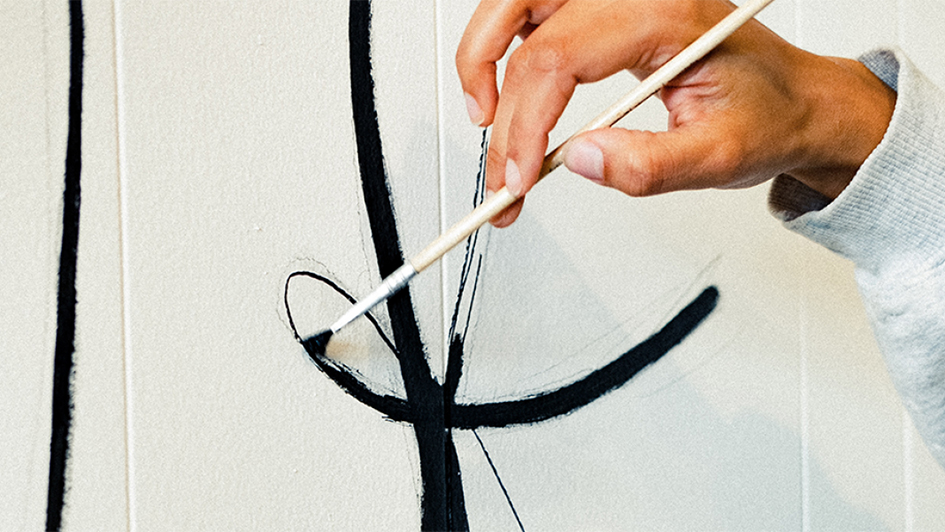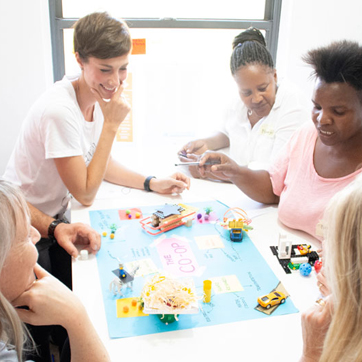STEM and creativity
Skills, that learners need for the future

Young people are ready to take on social responsibility – we see this in the protests, initiatives, and movements that have come to life around the world through their actions. To address the serious and complex challenges of our time, it is essential that basic literacy in science and technology is supplemented by skills such as creative problem solving, teamwork, and critical thinking. In pursuit of this goal, we have expanded our international education work to include “STEM and creativity.” This shift encourages innovative thinking and creativity in STEM lessons while also supporting young people in taking the initiative to make conscientious contributions toward shaping our future.
Definition
STEM education and creativity – how is that a match?
In the future, how can we teach and learn in a way that prepares students for complex challenges such as globalization, climate change, or digitalization? “STEM and creativity” links science and technology subjects with creative processes. With this program, we’re promoting a holistic education format that focuses on the individual learning experience of young people. This includes working with our partners on creating new teaching and learning methods. These methods are meant to encourage students to seek interdisciplinary, creative ways to solve problems, and to support them in seeking innovative ideas and alternative approaches for addressing complex issues.
»It will be our imagination, our awareness and our sense of responsibility that will enable us to harness the opportunities of the 21st century to shape the world for the better.«
Motivation
Which skills will be taught?
Siemens Stiftung contributes to sustainable societal development in all of its work. We want to provide young people with the skills and experience they need to innovatively and effectively shape the future for themselves and their communities. Schools are tasked with teaching knowledge, skills, behaviors, and values so the individual gifts and characteristics of each student can emerge. High-quality STEM education is a basic requirement for understanding complex relationships. Before they can address the key challenges of our future, students need strong communication skills, the ability to innovative, creative thinking, and social and emotional competence. These are known as “21st Century Skills” and include skills, abilities, and learning concepts that have been identified by education institutions and influential political, business, and academic figures as important preparation for life in the 21st century.
Focus
Design thinking as an innovative method for teaching and learning
In our “Design Thinking in STEM” project, we work with The Index Project on methods that can be used to solve complex problems with STEM education and creative processes. A key element to this approach is the creative method of design thinking. The method comes from the traditional design discipline with its focuses on the wants and needs of people. Students are encouraged to seek solutions by taking on the point of view of a person who is actually facing a problem. Potential solutions are tested and evaluated early on in interdisciplinary teams. Teachers have an important role to play when it comes to implementing innovation at schools and in education systems. This calls on their own creativity and represents an essential part of addressing the much greater challenge confronting education.

An ode to creativity
In a changing world, why is creativity needed more than ever? Project manager Christine Niewöhner explains in a blog post for The Index Project.
International
Our global engagement for creativity in STEM lessons
For years, we’ve supported efforts around the world to link creative approaches with STEM education. In Latin America, we support the development of STEAM Territories. These efforts are geared toward bringing about a shift in Latin American education through regional alliances while developing comprehensive, future-oriented concepts. We also work with the STEAM Foundation in South Africa, an organization that implements our education program Experimento and prepares children for the future with practical scientific lessons.



